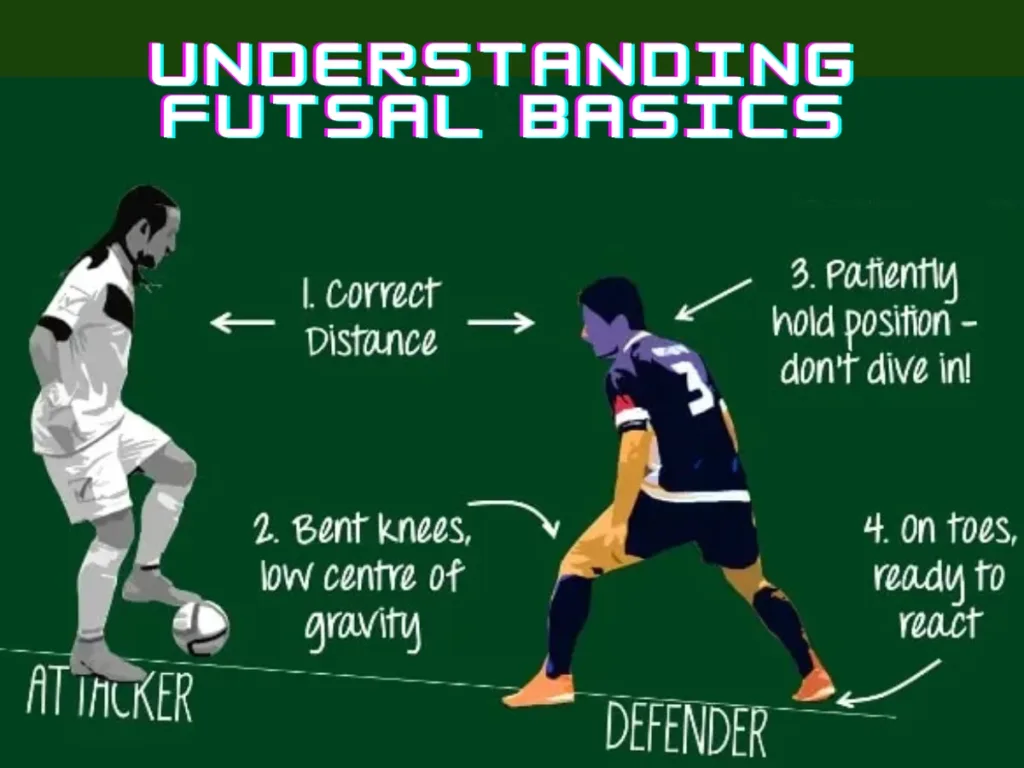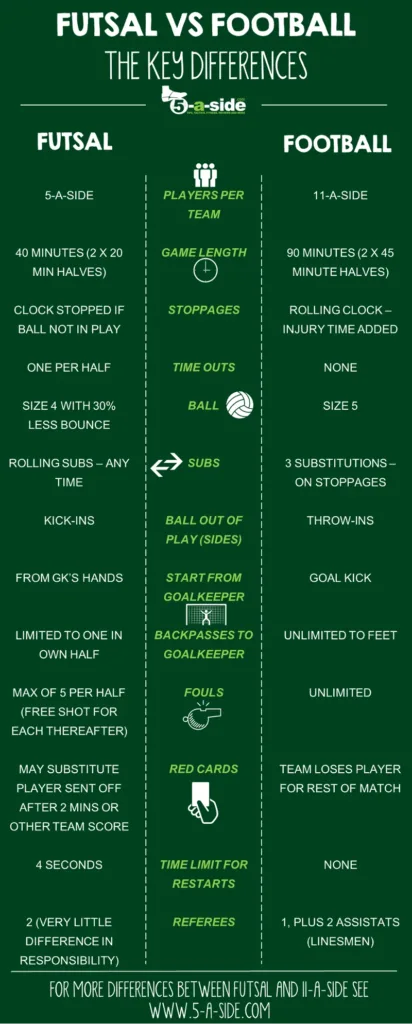I. Introduction
Certainly! Imagine a bustling indoor sports arena on a Saturday afternoon. The sound of sneakers squeaking against the polished floor fills the air as teams gather on the futsal court. In one corner, a group of young players huddles together, their faces flushed with excitement. They lace up their shoes, eagerly anticipating the fast-paced action ahead.
As the game begins, the ball zips across the court with lightning speed. Players showcase their dribbling skills, weaving effortlessly between opponents. Every touch of the ball is precise, and every movement is calculated. In the blink of an eye, a player executes a perfect pass, setting up a teammate for a scoring opportunity. The crowd erupts into cheers as the ball finds the back of the net.
This scene exemplifies the essence of futsal—a thrilling blend of speed, skill, and strategy. Originating in South America, it has captured the hearts of players and spectators worldwide. Its compact playing area demands quick thinking and nimble footwork, fostering an environment where creativity flourishes.
Unlike traditional soccer, this sport is played indoors on a hard court surface. This unique setting enhances the intensity of the game as players navigate tight spaces and sharp turns. With fewer players on each team, there’s ample opportunity for individual talent to shine. From lightning-fast dribbles to precision passes, every aspect of futsal emphasizes the importance of skill and agility.
But it’s not just the players who are drawn to futsal; spectators also find themselves captivated by the action-packed matches. The fast pace of the game keeps audiences on the edge of their seats as they witness moments of brilliance unfold before their eyes.
As futsal’s popularity continues to soar, its impact on the world of sports is undeniable. From local community centers to international tournaments, the allure of futsal is undeniable. It’s more than just a game; it’s a testament to the power of skill, agility, and quick decision-making. Whether you’re a seasoned player or a curious spectator, this sport offers an exhilarating experience that’s hard to forget.
II. Understanding Futsal Basics

What does it mean?
Futsal, derived from the Spanish phrase “fútbol sala” or “fútbol de salón,” translates to “indoor soccer.” This name highlights its essence as an indoor sport that retains the core elements of traditional soccer but within a smaller, more confined space.
How is it played?
This sport is played on a hard court surface with a smaller, low-bounce ball. Each team consists of five players, including a goalkeeper. The game emphasizes ball control and precise passing, given the reduced space and the pace at which it is played. Matches are typically divided into two 20-minute halves.
Is it soccer?
While it shares many similarities with soccer, such as basic rules and objectives, it is a distinct sport. The smaller playing area and the focus on technical skills differentiate it significantly from traditional soccer.
Why play this sport?
These sports offer numerous benefits, including:
- Skill Development: The confined space enhances dribbling, ball control, and quick decision-making.
- Physical Fitness: The fast-paced nature ensures a high-intensity workout.
- Accessibility: Played indoors, it can be enjoyed regardless of weather conditions.
- Fun: Its dynamic and engaging style makes it enjoyable for players of all ages.
III. Exploring Equipment
What are futsal shoes?
These sport shoes are specifically designed for indoor play. They have a flat, non-marking rubber sole that provides excellent grip on indoor surfaces. The upper part is typically made of lightweight, durable materials that offer good ball control.
Are these sports shoes good for running?
While these shoes provide excellent grip and comfort on indoor surfaces, they are not ideal for long-distance running. Their design caters to the quick, multidirectional movements typical of this rather than the straight-line stability needed for running.
How Should These Sport Shoes Fit?
These shoes should fit snugly but comfortably, with enough room to wiggle your toes. A proper fit ensures better control over the ball and reduces the risk of blisters and other injuries.
Can these sport shoes be used for other sports?
These sport shoes can be used for other indoor sports like volleyball or handball due to their grip and comfort. However, they may not provide the specific support needed for sports with different movement patterns or impact levels.
IV. Comparing Futsal and Football

Can Futsal Players Play Football?
Yes, futsal players can transition to football. The skills developed in futsal, such as close ball control and quick thinking, are highly transferable to football. Many professional football players, including Lionel Messi and Cristiano Ronaldo, deserve credit for honing their skills.
Can it be as popular as football?
While it is growing in popularity, football’s global reach and established fan base make it challenging for the sport to reach the same level. However, futsal’s unique appeal continues to attract a dedicated following and could see significant growth in the future.
Is it different from soccer?
Yes, this sport differs from soccer in several key ways:
- Playing Surface: These sports are played indoors on a hard court, while soccer is typically played outdoors on grass.
- Number of Players: There are five players per team, whereas soccer has eleven.
- Ball Size: There is a smaller, low-bounce ball.
- Game Duration: The matches are shorter, with two 20-minute halves.
Source: https://footyware.com/futsal-vs-soccer/
V. Rules and Regulations

How do you play it?
These sports are played with two teams of five players each, including a goalkeeper. The objective is to score by getting the ball into the opponent’s goal. The game is fast-paced, requiring quick reflexes and precise passing.
How many players does each team have in sports?
Each team consists of five players on the court: four outfield players and one goalkeeper. Substitutions are unlimited and can be made at any time.
What are the rules of it?
Key rules include:
- Kick-ins: Instead of throw-ins, players kick the ball back into play.
- Four-Second Rule: Players have four seconds to restart play from kick-ins, goal clearances, and corner kicks.
- No Offside Rule: There is no offside rule in futsal, encouraging continuous play.
- Accumulated Fouls: Teams are penalized for every sixth foul in each half, resulting in a direct free kick for the opposing team.
VI. Exploring Techniques
How do I do the shuffle?
The futsal shuffle involves quick, small steps to maintain balance and control while dribbling. It’s essential for maneuvering in tight spaces and evading defenders.
How to Shoot in Futsal?
Shooting in it requires precision over power due to the smaller goals. Players often use the instep or the toe for quick, accurate shots.
How to Pass in Futsal?
Passing in futsal focuses on short, sharp passes to maintain possession and create scoring opportunities. Players often use the inside of the foot for accuracy and control.
VII. History and Origins
When was it created?
Futsal was created in 1930.
Where did it originate?
Futsal originated in Montevideo, Uruguay, by Juan Carlos Ceriani.
Who invented futsal?
Juan Carlos Ceriani, a teacher in Uruguay, is credited with inventing futsal. He developed the game to provide an indoor alternative to soccer, suitable for playing in smaller spaces.
VIII. Understanding Culture
Where is it most popular?
It is most popular in South America and Europe, particularly in countries like Brazil, Spain, and Portugal. These nations have strong traditions and competitive leagues.
Why is it important?
Futsal is crucial for developing soccer talent, as it emphasizes skills that are transferable to the larger game. It also provides a year-round, indoor alternative, making it accessible in various climates.
How did it become popular?
Futsal’s popularity grew through its endorsement by major soccer stars and the establishment of official leagues and tournaments. The sport’s exciting, fast-paced nature has also contributed to its widespread appeal.
IX. Conclusion
In summary, this is a dynamic and engaging sport that offers numerous benefits, from skill development to physical fitness. Its unique characteristics and growing popularity make it an exciting alternative to traditional soccer. Whether you’re a player looking to improve your game or a fan seeking new thrills, futsal provides a compelling and rewarding experience. Explore and participate in futsal to experience the joy and excitement it brings to the world of sports.






Leave a Reply